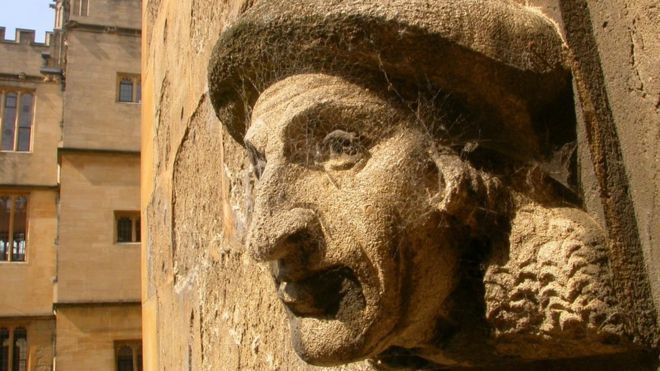
Some London state schools send more pupils to Oxford and Cambridge than private schools in other parts of England, research suggests.
“A subset of elite state schools are contributing to the London and South East of England bias,” says a study by King’s College London researchers.
“At post-16, these schools are comprehensive in name only,” said researcher Sol Gamsu.
The research describes a concentration of elite schools in the South East.
The paper, to be presented to a Royal Geographical Society international conference later this month, maps the number of pupils sent to Oxford and Cambridge by different types of school from different regions.
Regional variation
It has long been known that students from schools in London and the South East are disproportionately overrepresented at both Oxford and Cambridge, says the study.
Using Department for Education data, it identifies the extent that access to England’s two top universities varies between regions.
Overall, considering both state and private schools together:
- inner London sends 1.89 times more students to Oxbridge than the national average
- the South East sends 1.46 times more students
- outer London schools send 1.37 more students.
But other regions of England are underrepresented:
- In the North East schools send 0.44 of the national average to Oxbridge
- In the North West the figure is 0.57
- and in the East Midlands it is 0.59.
When the figures were broken down further, according to school type, the study found state schools in the South East sent 1.43 times more students than the national average to Oxford and Cambridge,
In outer London, the figure is 1.24 times as many.
But private schools in regions including Yorkshire and Humber, the East Midlands and the North East sent about half as many as the national average, the study – which has not yet been published online – found.
‘Feeder schools’
Some Oxbridge “feeder schools” send up to 30% of their intake to the two universities, say the researchers.
“These are still largely the elite of the private sector, but this list also includes what have basically become elite sixth-form colleges,” said Mr Gamsu.
Mr Gamsu said London gentrification and selective sixth forms had contributed to the rise of “super-state” schools.
“The capital’s rapid economic and social change lies behind the rise of these schools,” he said.
“London’s housing market has resulted in the price of accessing sought-after comprehensives in gentrified neighbourhoods rising beyond the means of many less affluent residents.”
Mr Gamsu cited north London’s Camden School for Girls and Fortismere School, in Muswell Hill, as examples.
A report earlier this year by London Councils said that last year 64,953 young Londoners had progressed to higher education, up 4% on the previous year.
“While this is good news, more still needs to be done to ensure everyone can make the journey from school or college to higher education,” that report added.
The Department for Education pointed out that, in a bid to widen access, theHigher Education and Research Bill will require higher education providers to publish applications, offers and completion rates broken down by gender, ethnic background and socio-economic class.
“There should be no barrier to any child’s ambitions and we are already seeing record numbers of disadvantaged young people going to university.
“We want to go further and ensure we are building a society that works for everyone,” said a spokeswoman.
[Source:- BBC]
